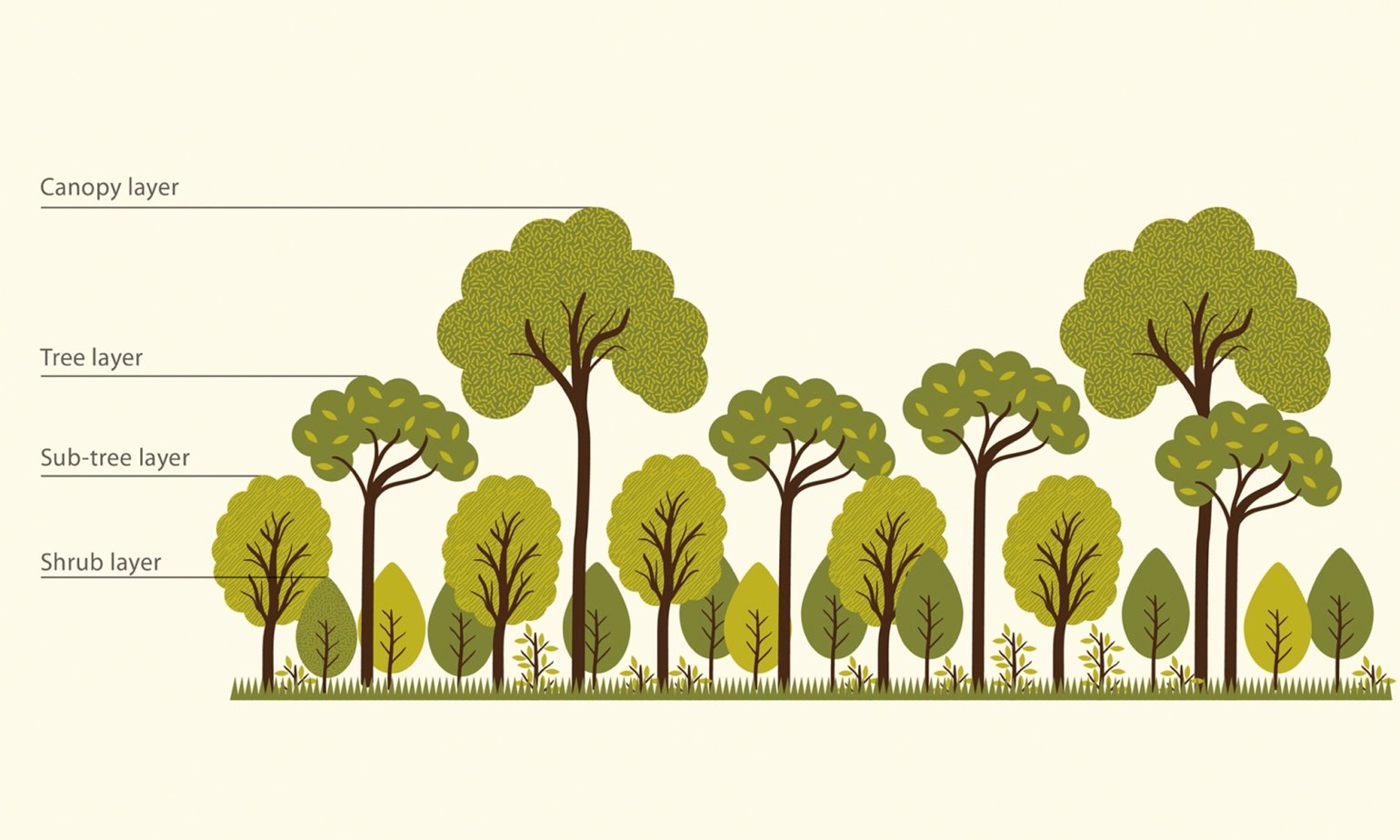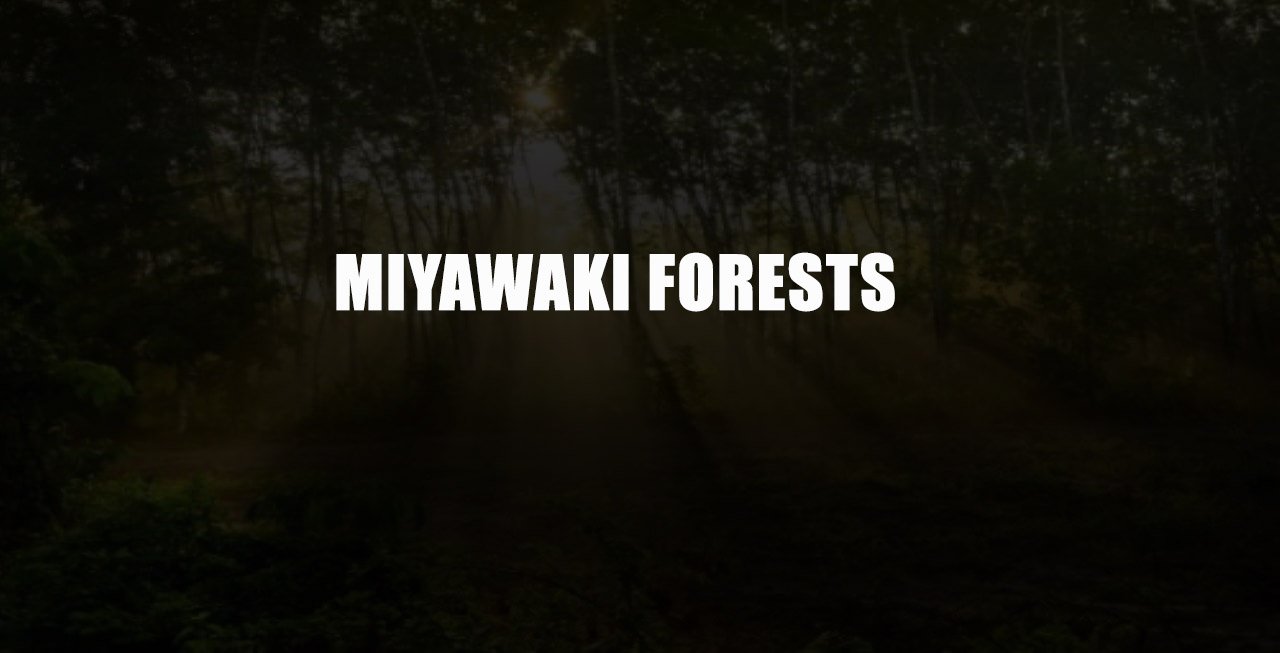An Overview:
In the past decades, afforestation was primarily a means for generating income from timber, and today is an integral part of our survival. The lost green cover in the urban areas has led the cities to become ‘urban heat islands’ that pose significant threats to not just humans but also contribute to global climate change.
Being highly vulnerable to climate breakdown, Indian forests are an integral part of mitigation. The tree cover of almost 1.6 million hectors was lost from 2001 to 2018, according to the study revealed by the World Resources Institute. India has promised to cover 33% of its geographical area with forest cover by 2022, in a pledge to UNFCC (currently being 24%). One of the most effective and possible methods is Miyawaki method of afforestation or also known as Potted Seedling Method, helping to recover the use of native species to create dense multilayered forests.

To achieve the numerous benefits of the method is not simple, but brings together a spectrum of processes that are followed with precision, from preparing the soil to managing a mature stand. In this article, let get to know how and why the Miyawaki method is sustainable and how breath-taking the results are?
Miyawaki Method:
Miyawaki is a particular technique pioneered by the Japanese botanist Akira Miyawaki, helping to build dense, native forests. The approach is supposed to ensure that the plant growth is 10 times faster and 30 times denser than usual. Miyawaki has been extremely successful with over 17 million trees planted in 1700 locations globally. It involves planting dozens of native species in the same area, further becoming maintenance-free after the first three years.
Miyawaki forestation is a unique way to create an urban forest that can grow within a short span of 20-30 years while a conventional forest takes around 200-300 years to grow naturally. In this method, the saplings are planted close to each other so that the greens receive sunlight only from the top and grow upwards than sideways.
Types of native species:
Conventional plantation
- One tree per square foot
- Limited species varieties
- Extensive maintenance required
- Susceptible to pests and diseases
Multi-layer Forest
- 30 trees per square foot
- 25-30 species varieties
- No maintenance after 3 years
- Resilient to pests and diseases
Compared to the conventional plantation, Miyawaki forest grows 10 times faster, 100 times more biodiverse and have 30 times more green surface area with a 100% organic process.
Process of Miyawaki method planting:
- Determine the soil texture and quantify biomass: Perforater helps to improve the perforation and allows the roots to grow quickly. Water retainers help the soil to retain more moisture and water, as compared to its natural retention capacity. Organic fertilisers are required for nourishment and Mulch insulates and protects the soil, preventing sunlight from falling directly on the soil. Mulch also plays a huge role in preventing water from evaporating.
- Selecting tree species for plantation: Make a database of all native species of your are and identify its type (Evergreen, Deciduous or Perennial), maximum height and assign layer. Choose fiver different species to be the major forest species constituting to 40-50% of the number of trees, the rest common species in the area constituting 25-40%.
- Design the forest: Identify the exact area of afforestation so as to procure materials and execute the project. Water plan layout needs to be designed by an architect, based on daily water requirement for the area and the forest needs to be watered regularly for the first 2-3 years.
- Preparing the area: Site inspection needs to be determined the feasibility and scope of the project and the site should get sunlight for a minimum of 8-9 hours a day. Removing debris and weeds regularly. Watering facility installation with outlets for hoses can reach the entire area of the forest.
- Plant the trees: Perforator, water retainer and fertiliser, all without clumps should be mixed together in exact ration as was decided initially, for each mound. Each forest should be created on a 100 sqm mound, using an earthmover machine, first dig the earth to a depth of 1 metre on the 100 sqm land. Place plants on the mound to create a multi-layered natural forest. Try to maintain 60cm between saplings and don’t follow a pattern while planting. To plant a tree, dig a small pit on the mound with a trowel, and gently place the tree in the pit, level the outside soil gently around the stem of the plant. Mulching should be evenly laid out on the soil, in 5-7 inch layer so that the mulch stays on the ground and does not fly around.
- Look after the forest for three years.

Miyawaki in India:
In India, this method is slowly gaining speed. Afforestt has worked with various companies and individuals to create these forests. Afforests’s Miyawaki technique included a six-step process that starts with surveying the soil to access physical texture, organic carbon, soil PH and more.
To create a tiny forest of 300ft & 100 sq.m, it roughly costs around Rs. 50,000 to Rs. 60,000. But the paradigm shift is from just planting trees to creating a forest and take time up to 30 years. Prem Parivartan, also known as Peebal Baba, is one of the earliest champions of Miyawaki method in India and at first Patiala did not receive a positive response from farmers. This was mainly due to intensive methodology and the costs that came with it.
An Environment Support Group said Miyawaki’s increasing usage is being justified to cut trees – where people say even if we cut trees or forests somewhere, we’ll replace them by this method. In fact, some people also have questioned the method considering the climate in Japan and the regular occurrence of natural calamities, Miyawaki works and don’t think this method is good for a tropical country like India.
Today, Miyawaki forests are thriving in countries around the world, including Belgium, Netherlands, U.K, Pakisthan, France, etc and these forests are an exercise in building communities.

